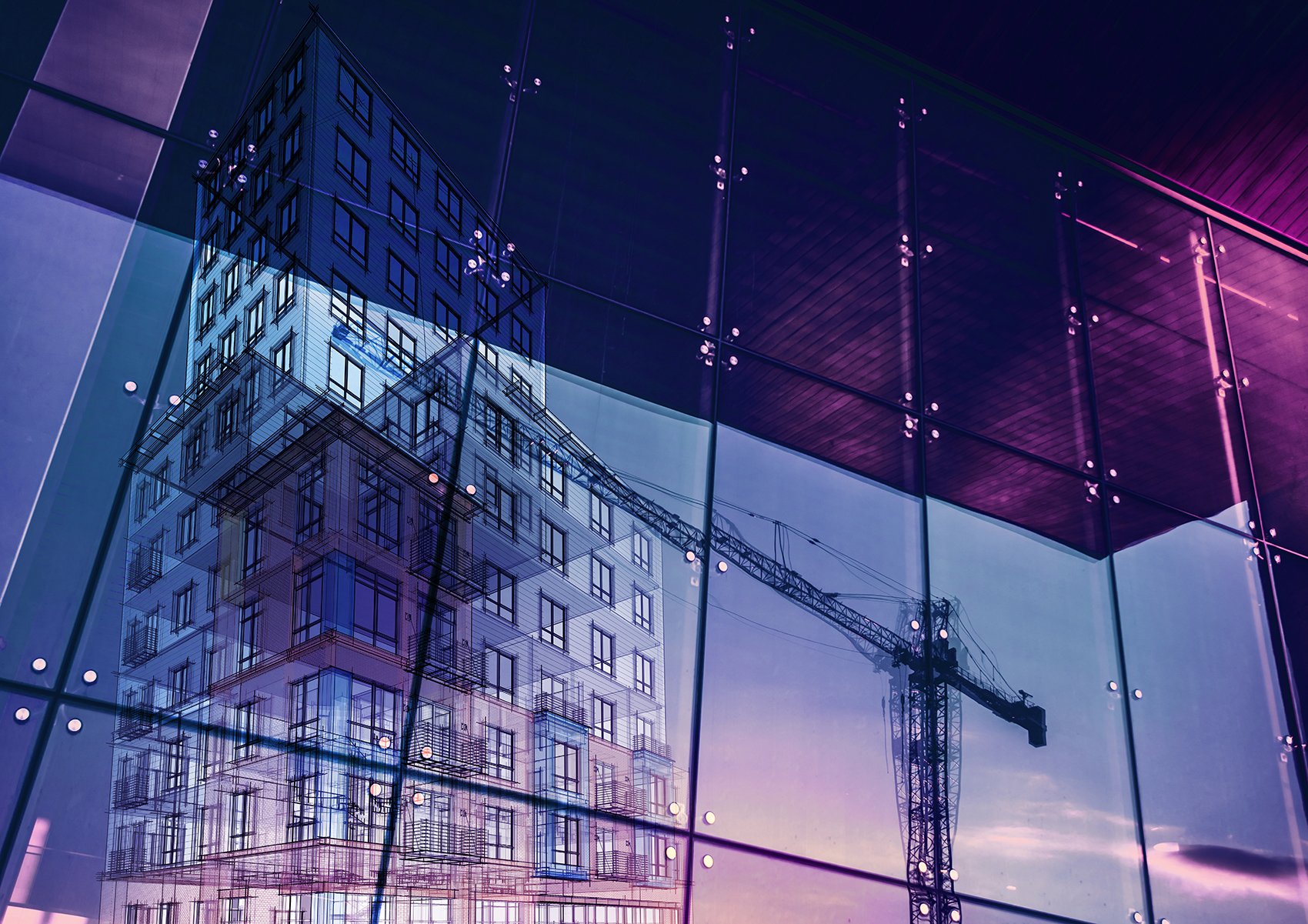The building team
A building team brings together various disciplines at an early stage of the building project. Typically, it comprises the principal (client), an architect and a contractor (along with the contractor’s advisers), although other experts may also be involved. The purpose of a building team is to engage key parties – particularly the contractor – early in the design and planning process, enabling the project to be delivered more efficiently and allowing potential issues to be identified and addressed promptly.
In addition, the building team agreement between the principal and the contractor may include provisions regarding cooperation, optimisation process, tender procedure and costs and the allocation of risk between parties during the execution phase.
Four interesting innovations in the DG2025 building team model compared to the DG2020 version
The DG2025 building team model introduces four key innovations compared to its 2020 predecessor. Below, we briefly outline these changes and consider their practical relevance for principals.
- Phasing of the design process
To improve overall project control, the DG2025 model explicitly divides the building process into four defined phases:
Phase 1: (Start-up) building team - This initial phase provides an opportunity for the parties to agree on the working arrangements and collaborative approach that will guide the project.
Phase 2: Basic design – The design process commences in this phase. Each party is expected to review the information provided from the perspective of their own expertise, assessing its accuracy and completeness and raising any comments as necessary. At the end of this phase, the team jointly assesses the project’s feasibility and establishes a task-based budget.
Phase 3: Detailed design – This phase focuses on developing the design in sufficient detail to allow the implementation period to begin. Feasibility is once again reassessed at this stage.
Phase 4: Contract preparation – The final phase involves preparing the necessary documentation for the execution phase. All relevant project information – including previous reports and relevant project-specific conditions – must be collated and made accessible to all parties during the building project. In addition, a draft building agreement is also prepared to enable progression towards contract formation.
Progression from one phase to the next is contingent upon a joint decision by the building team. - Control over pricing
One of the main concerns for a principal is maintaining control over pricing. While the DG2025 building model acknowledges that price formation is an ongoing process, it also introduces safeguards to prevent undue delay in reaching agreement on the final contract sum.At the conclusion of phases 2, 3 and 4, the parties are required to issue a formal statement confirming the continued feasibility of the project.
In addition, there is now a continuing obligation for all parties to inform the other parties of any (negative) impact on the cost of implementation.
Furthermore, the option to obtain the opinion of an independent expert has been removed. If the parties cannot agree on the price, the principal may decide to appoint another contractor.
- Attitude and behaviour
The DG2025 model places a strong emphasis on the conduct of the parties involved. Participants are expected to act flexibly, proactively and transparently. The recommended approach is one of 'working explicitly' – that is, engaging in active communication before decisions are made or actions are taken, with a focus on both content and process.This method aims to ensure that any mistakes made by one of the parties are addressed promptly and in a constructive, solution-focused manner.
According to the model, the principal takes more of a key role in this respect. The principal - or designated development manager – is expected to take the lead, coordinate activities and facilitate timely decision-making.
This combination of attitude, behaviour and structure seeks to create a safe and collaborative working environment – one that supports improved project outcomes and encourages learning and adaptation where needed.
- Risk and return
To help ensure that early-stage collaboration translates into a successful implementation phase, the DG2025 model also focuses on the proactive management of risks and opportunities from the outset. A key instrument in this regard is the 'risk file' (risicodossier), which the building team is expected to maintain throughout the project. This file records identified risks, consequences for time, cost and quality, the control measures in place and any residual risks.An important aspect of this approach is the ongoing warning obligation. As soon as risks increase or concerns arise that may affect project feasibility, parties are required to inform one another promptly and clearly. The aim is to minimise unforeseen issues during the project and to protect the integrity of the task-based budget.
DG2025 in practice
The DG2025 model is a further development of its predecessor, building on practical experience and feedback from both users and the model’s drafters. Its objective is to enhance collaboration within the building teams and provide greater flexibility for parties to tailor the agreement to their specific project needs.
In practice, the use of the DG2025 model may offer principals more predictability – partly through the predetermined project phases, including formal review points, and partly due to the transparent conduct expected of all parties. This transparency offers principals better tools to align the team and remain actively informed throughout the project.
Ultimately, however, the effectiveness of a building team continues to depend on the mutual trust between the parties involved. This trust must be underpinned by clear agreements on matters such as liability, phasing (including the principal’s authority not to proceed to the next phase), termination compensation and intellectual property rights. Our expectation is that contractors will typically become involved no earlier than Phase 3.
If you have any questions about the DG2025 building team model or would like to discuss building team agreements more generally, please don’t hesitate to contact our Project Development & Building team.



